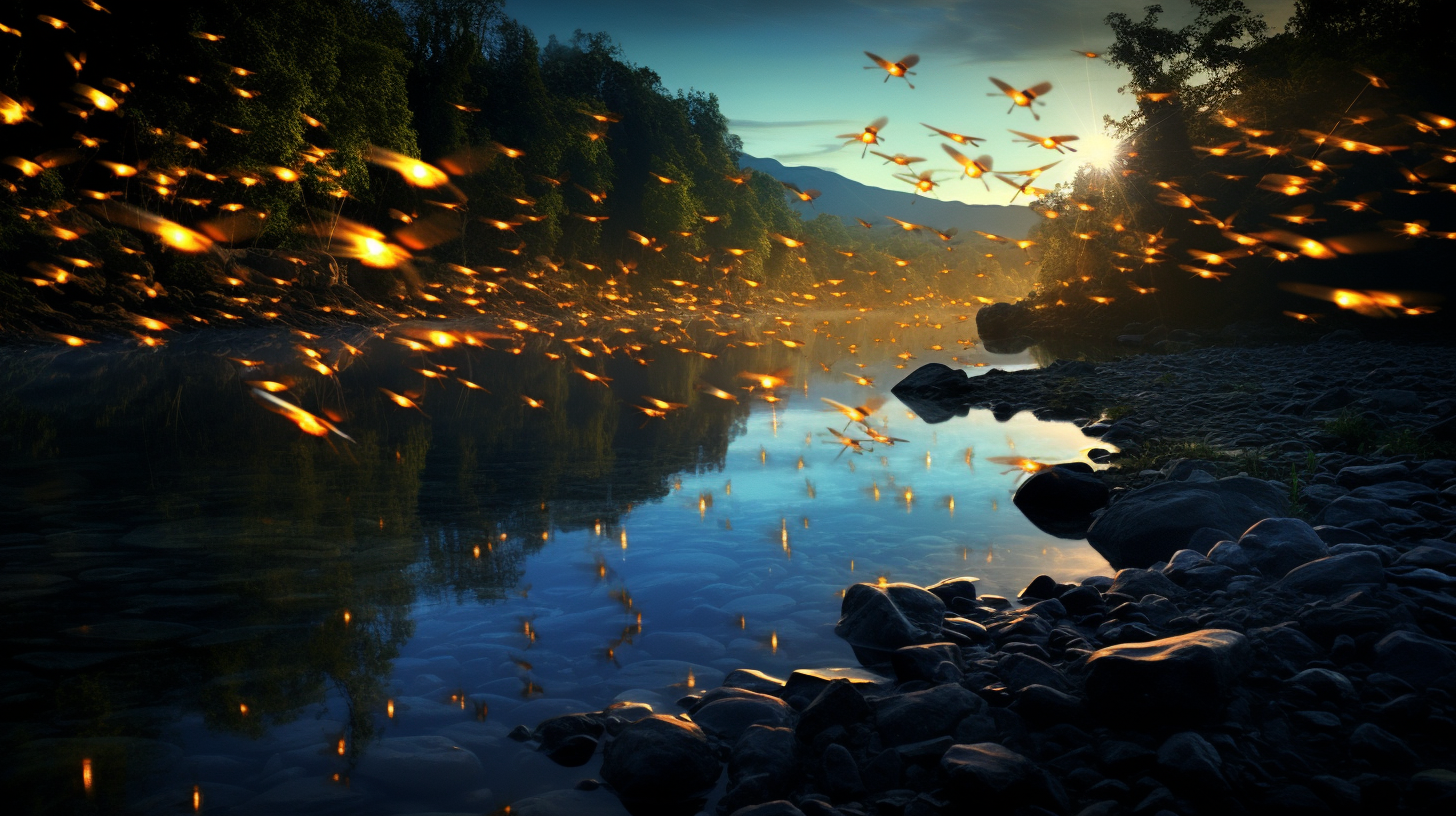As dusk descends upon the urban outskirts, a faint glimmer heralds the arrival of twilight’s tiniest torchbearers. The fireflies, or lightning bugs as some call them, flicker unabated, their intermittent glow a rhythmic rebellion against the encroaching darkness. Yet, the somber backdrop is no ordinary nightfall; it is one that has been incessantly deepened by an environment scarred by human indiscretion.
In the nooks of overgrown wastelands which skirt the once teeming metropolises, these bioluminescent beacons persevere; they dance in the shadows of progress turned into decline, thriving amid rusting husks of factories and derelict structures. Here, they stand as a poignant metaphor – a swinging pendulum between an ecological elegy and the earth’s stoic persistence.
Ironically, the same urban decay that offers respite to our gleaming friends is borne of human neglect – a testament to industry’s unsustainable appetite. Yet these creatures adapt, appropriating the remnants of our disdain as their sanctuaries. The tale of the fireflies is a silent symphony of adaptation, resilience, but – too often – overlooked portents.
Our little luminous larvae depend on clean water and air for their survival, yet they now thrive in environments where these commodities have become luxuries. The dystopian dissonance echoes – how can such fragile, enchanting life persevere in these grim niches? It suggests a bewildering paradox: the capability of life to endure and enchant even in habitats seemingly forsaken by the hands that shaped them.
Researchers who whisper among willows and wade through wetlands have found that toxic environments are altering firefly behavior and life cycles. Yet, with a kind of grim irony, they also note that these changes have not yet snuffed out the pulse of life within these creatures. It begs the question – what else is out there, flickering on the fringe, waiting for our attention?
The conversation surrounding conservation has never been more vital, yet it teeters on the brink of banality when not met with action. We stand at a precipice – acknowledging the persistence of life, like these fireflies, while simultaneous sealing its doom with our paralysis in addressing environmental degradation. The story of the fireflies is not just one to inspire awe; it is a call – albeit potentially one of the last – to reckon with the consequences of our environmental dalliances.
Imagine – a world where the only light comes from the final few fireflies, relics of a bygone era – a time when nature’s resilience wasn’t the exception but the expectation. What legacy do we choose to craft in the gloaming? That is the question lingering in the phosphorescent trails left by our diminutive heralds.
Their twinkling presence amidst the decay is an invitation, a challenge even, to map a new trajectory. Can we stitch a tapestry that venerates their gentle tenacity, marries it with fervent, responsible stewardship? To salvage what remains, we must cherish these twilight sparks, not just as nature’s poetry, but as messengers bearing the unvarnished truth of our time.
In a world where serenity is frequently drowned out by the clamor of crisis, the fireflies’ glow is a hushed reminder that even in the deepest despondency, there are specks of living light, stirring defiance. While A Glimmer in the Toxic Mist spoke of flora’s unyielding bloom against the backdrop of pollution, these fireflies now emerge as the mobile beacons of that persistent glimmer.
Let us not idolize the fireflies’ survival as a sign of nature’s inexhaustibility but rather heed their resilience as a directive: to awaken, to engage, and to ignite change that might one day restore a more harmonious glow to our dusking world.
